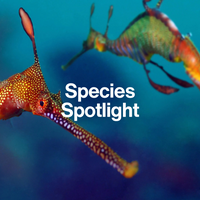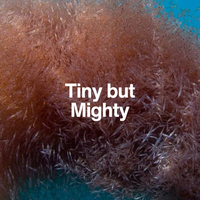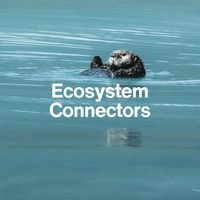The Ocean’s Drifting Grazers
Zooplankton

From tiny crustaceans to baby fish, zooplankton are the bite-sized fuel of the sea—feeding everything from anchovies to whales.
Introduction
Small Size, Big Impact
Zooplankton are a diverse group of tiny, drifting animals found throughout the ocean. Though most are no larger than a grain of rice, they form the critical link between the microscopic and the massive—eating phytoplankton and becoming food for larger creatures.
From coral reefs to the deep sea, zooplankton are everywhere—and without them, the entire marine food web would collapse.

Ecological Role
The Link That Feeds the Sea
Zooplankton play a central role in ocean ecosystems by connecting primary producers (like phytoplankton) with larger predators.
They:
- Graze on phytoplankton, controlling bloom sizes
- Serve as food for fish, whales, seabirds, and jellyfish
- Transfer carbon and energy up the food web
- Help export carbon to the deep sea through their waste and sinking bodies
Without zooplankton, energy would stop at the base of the food chain—making them essential to ocean life.

Fun Fact
Some copepods—the most common zooplankton—are among the fastest animals on Earth relative to body size.
Biology & Behaviour
Built for the Invisible World
Zooplankton come in many forms: some are tiny crustaceans, others are larval stages of larger animals, like fish, worms, and molluscs.
They:
- Drift with ocean currents, often migrating vertically at night to avoid predators
- Include both holoplankton (plankton all their lives) and meroplankton (only during early life stages)
- Are highly sensitive to environmental change—their populations shift with temperature and nutrient levels
- Can form massive swarms, sometimes visible as clouds in the water
Despite their diversity, they all share one thing: they’re vital for ocean balance.

Threats & Challenges
Drifting into Danger
Zooplankton are facing increasing threats from a changing ocean:
Ocean warming
which affects their reproduction and migration
Shifting currents
which can isolate them from food or habitat
Ocean acidification
especially for shelled species like pteropods
Pollution
including microplastics they often ingest
If zooplankton disappear, the entire marine food chain risks unraveling.
Did you know?
Each night, billions of zooplankton rise to the ocean’s surface to feed—this nightly vertical migration is the largest animal movement on Earth.
Why They're Mighty
Tiny Champions of the Sea
Zooplankton may be small, but they are the ocean’s great connectors—bridging energy from microscopic plants to massive whales.
By grazing on phytoplankton and serving as prey for nearly everything else, they sustain entire ecosystems, from coral reefs to the open sea.
Their role may be quiet, but it’s absolutely essential.

Key Takeaways

NEXT SPECIES
Meet the Masters of the Micro-Hustle: Copepods
They’re the most abundant animals you’ve never seen—small, spring-loaded crustaceans that power ocean food chains from the bottom up.




